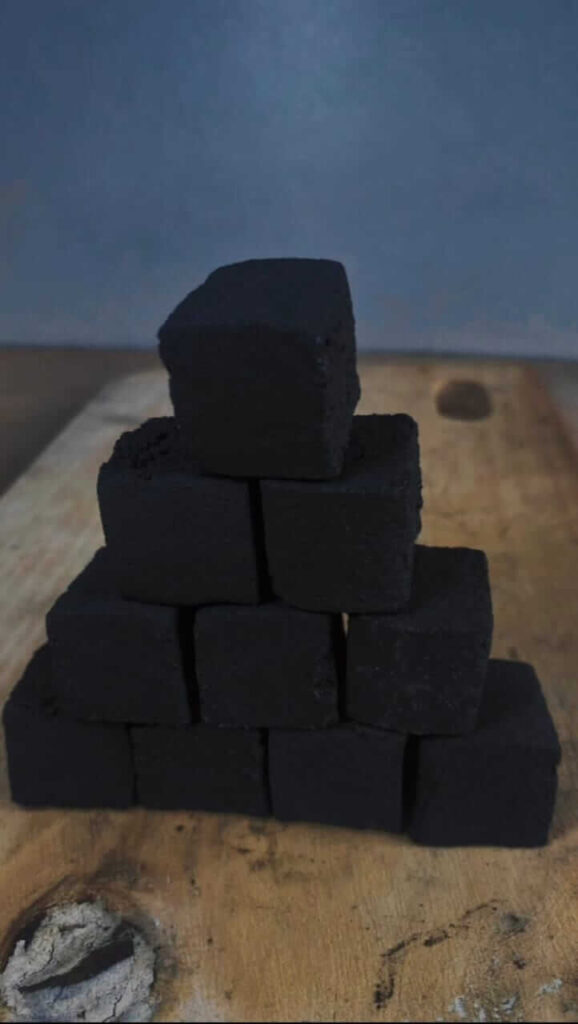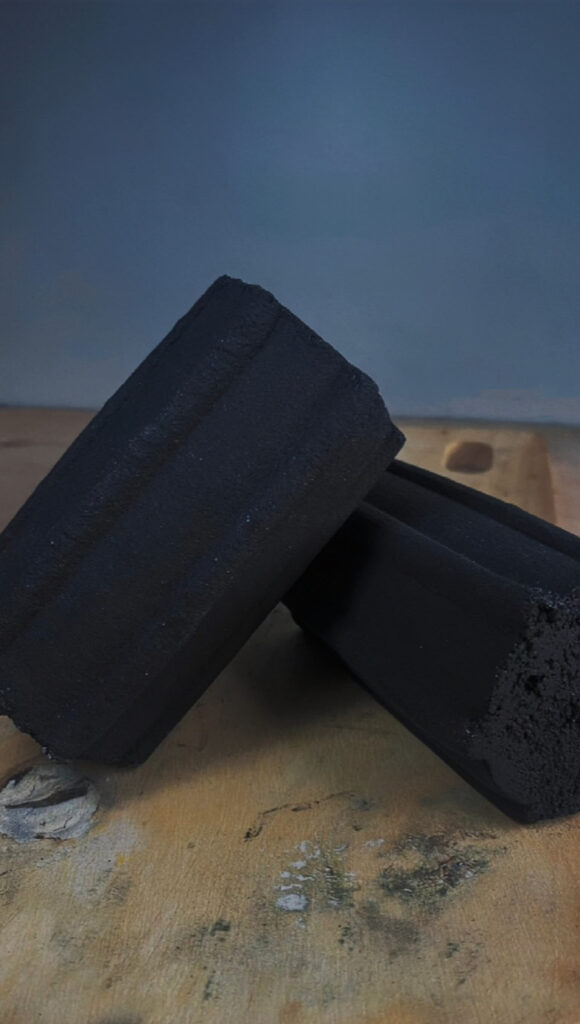
Charcoal briquettes have become a key player in the push toward sustainable and efficient energy solutions. They provide a practical and environmentally friendly alternative to traditional fuel sources like firewood, coal, and natural gas. This guide explores everything you need to know about charcoal briquettes, from their composition to their environmental benefits and applications.
See more: bintangbriquettes.com
1. What Are Charcoal Briquettes?
Charcoal briquettes are compact blocks of combustible material, primarily made from biomass waste like wood, coconut shells, or agricultural byproducts. Unlike traditional lump charcoal, briquettes are engineered to achieve consistency in size, shape, and performance, making them a preferred choice for various applications.
Composition of Charcoal Briquettes:
- Charcoal Fines: The primary source of carbon, providing the fuel for combustion.
- Binders: Natural adhesives like starch or clay that hold the briquette together.
- Fillers: Additives such as limestone or sawdust that enhance combustion and reduce costs.
- Accelerants (Optional): Materials like nitrate that improve ignition time.
Charcoal briquettes offer predictable and controlled burning properties, making them ideal for household cooking, industrial heating, and recreational use. Their compact design enables convenient storage and effortless transportation.
2. How Are Charcoal Briquettes Made?
The manufacturing process of charcoal briquettes involves several steps designed to optimize energy efficiency and quality. The following is a step-by-step outline of the process:
- Raw Material Collection: Biomass waste like coconut shells, wood chips, or agricultural residues is gathered as the primary material.
- Carbonization: The biomass is subjected to high temperatures in a low-oxygen environment to produce charcoal fines.
- Grinding and Mixing: The charcoal fines are crushed into powder and mixed with binders, fillers, and optional additives.
- Shaping: The mixture is compressed into uniform shapes, such as cubes, cylinders, or pillow forms, using a briquette press.
- Drying: The shaped briquettes are dried in kilns or open-air settings to reduce moisture content, ensuring a stable and efficient burn.
- Packaging: The finished briquettes are packed for distribution, ensuring they remain intact during transport.
Modern briquette production is often mechanized, improving efficiency and reducing production costs. Learn more about how charcoal briquettes are made.
3. Why Choose Charcoal Briquettes Over Traditional Fuels?
Charcoal briquettes offer numerous advantages over traditional fuel sources such as wood, coal, or gas:
Consistency
Briquettes provide uniform heat output due to their standardized size and shape, unlike irregular lump charcoal or wood logs.
Efficiency
Their high energy density ensures prolonged burn time and steady heat, making them cost-effective for long-term use.
Cleaner Burning
Compared to wood or coal, briquettes produce less smoke and harmful emissions, reducing air pollution and health risks.
Affordability
The availability of raw materials and efficient production processes make briquettes an economical fuel choice.
Versatility
Charcoal briquettes can be used for cooking, heating, and industrial applications, providing a multi-functional energy source.
These features make charcoal briquettes a superior alternative to traditional fuels. Discover why briquettes are better than conventional options.
4. The Environmental Benefits of Charcoal Briquettes Sustainable Solutions
One of the most compelling reasons to choose charcoal briquettes is their positive impact on the environment:
Waste Repurposing
Briquettes utilize agricultural and industrial byproducts like coconut shells and sawdust, reducing waste and promoting a circular economy.
Reduced Deforestation
Unlike lump charcoal, which relies on fresh wood, briquettes use renewable biomass, helping to conserve forests.
Lower Carbon Emissions
Briquettes emit fewer greenhouse gases than coal or traditional firewood, contributing to climate change mitigation.
Cleaner Air Quality
By generating less smoke and particulate matter, briquettes improve indoor and outdoor air quality, particularly in densely populated areas.
The environmental advantages of charcoal briquettes align with global sustainability goals, making them a preferred choice for eco-conscious consumers.Read more about the environmental impact of briquettes.
5. Key Applications of Charcoal Briquettes Sustainable Solutions
Charcoal briquettes are versatile and find applications across various sectors:
Household Cooking
Briquettes are widely used for grilling, barbecuing, and indoor cooking due to their consistent heat and ease of use.
Commercial Kitchens
Restaurants and food vendors prefer briquettes for their reliable performance and ability to maintain steady cooking temperatures.
Industrial Heating
Industries requiring high-temperature processes, such as metallurgy and ceramics, rely on briquettes for their energy needs.
Power Generation
Briquettes are increasingly being used as a renewable energy source in biomass power plants.
Outdoor Activities
For camping, picnics, and other recreational activities, briquettes are a portable and efficient fuel choice.
Their adaptability makes charcoal briquettes an essential fuel solution for diverse needs. Learn about the applications of briquettes.
6. Coconut Charcoal Briquettes: Sustainable Solutions A Superior Choice
Among various types of briquettes, coconut charcoal briquettes stand out for their exceptional properties:
Higher Energy Efficiency
Coconut-based briquettes have a higher calorific value, ensuring longer burn times and more efficient heat output.
Minimal Smoke and Odor
These briquettes produce little to no smoke, making them suitable for both indoor and outdoor use.
Sustainability
Produced from coconut shells, a byproduct of the coconut industry, these briquettes contribute to waste reduction and promote sustainable practices.
Chemical-Free
Coconut charcoal briquettes are free from chemical additives, ensuring a safe and natural cooking experience.
Premium Quality
Their dense structure and low ash content make them ideal for both household and industrial applications.
Coconut charcoal briquettes represent a blend of performance, sustainability, and quality, making them a preferred choice for consumers worldwide. Find out why coconut charcoal briquettes are the best.
7. Tips for Choosing High-Quality Charcoal Briquettes
When selecting charcoal briquettes, consider the following factors to ensure you get the best product:
- Material Source: Opt for briquettes made from renewable materials like coconut shells or agricultural waste.
- Burn Time: Look for briquettes with a prolonged burn duration to maximize efficiency.
- Ash Content: Choose briquettes with low ash residue for easier cleanup.
- Shape and Size: Ensure uniformity for consistent heat output.
- Additive-Free: Select briquettes without harmful chemicals for safer usage.
Checking these criteria can help you find high-quality briquettes suited to your needs. Learn more about choosing the right briquettes.
8. The Future of Charcoal Briquettes in Sustainable Energy
The demand for charcoal briquettes is expected to grow significantly in the coming years, driven by several factors:
Increasing Urbanization
With more people moving to cities, the need for clean and efficient cooking fuels like briquettes is on the rise.
Environmental Awareness
As consumers become more eco-conscious, the shift toward renewable energy sources like briquettes is accelerating.
Technological Advancements
Innovations in briquette production, such as automated presses and eco-friendly additives, are improving product quality and efficiency.
Government Support
Many countries are offering subsidies and incentives for renewable energy projects, including briquette production.
Global Market Opportunities
The export market for high-quality briquettes, particularly coconut-based ones, is expanding in regions like Europe, North America, and Asia.
Charcoal briquettes are poised to play a crucial role in the global transition to sustainable energy. Explore the future of charcoal briquettes.
Conclusion
Charcoal briquettes are more than just an alternative fuel—they are a solution for a sustainable future. From their environmental benefits and versatile applications apakahto their role in reducing waste and conserving natural resources, briquettes are a testament to innovation in energy solutions. Whether you choose standard or coconut-based briquettes, investing in this sustainable fuel source is a step toward a greener and cleaner world. Start using charcoal briquettes today.

